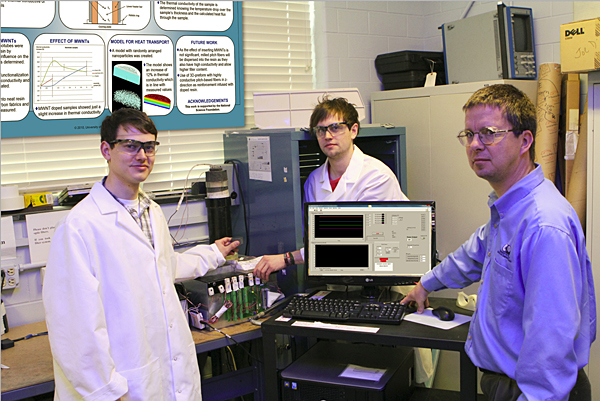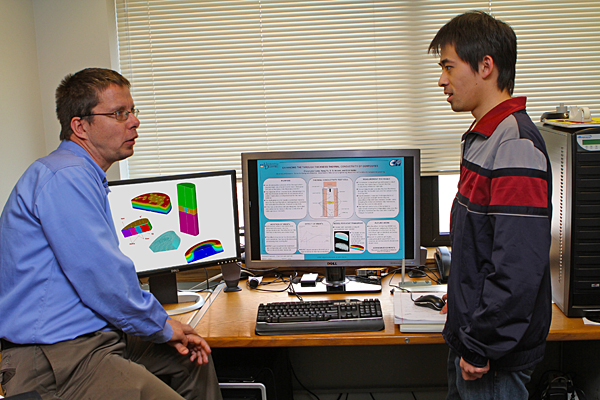


Creating more conductive composites
International partnership may yield breakthroughs in 3-D composites
11:03 a.m., May 4, 2011--Advanced composites offer a wide array of structural and multifunctional benefits over metals, but low through-thickness thermal conductivity limits their use in some applications. Now, a partnership between the University of Delaware Center for Composite Materials and the Institute für Textiltechnik (ITA) of RWTH Aachen University may help engineers tailor this property into 3-D polymer composites.
Funded by a three-year $367,000 grant from the National Science Foundation (NSF), the work has potential use in heat exchangers and other applications requiring the dissipation of heat and/or energy. Equivalent matching funds for the project were provided by NSF’s German counterpart, Deutsche Forschungsgemeinschaft (DFG) for the ITA Institute.
Research Stories
Chronic wounds
Prof. Heck's legacy
“Unidirectional or laminated 2-D composites are often not suitable in areas where heat is generated due to their limited thermal conductivity perpendicular to the direction of the fibers,” explains Dirk Heider, assistant director of CCM and associate professor in the Department of Electrical and Computer Engineering at UD.
“Here, heat must traverse polymer-rich interlaminar regions with relatively low thermal conductivity and must also pass through several fiber-matrix interfaces,” he adds. “The result is a thermal conductivity that is two to three orders of magnitude lower in the out-of-plane direction than in the in-plane direction.”
At UD, Heider and Suresh Advani, associate director of CCM and George W. Laird Professor of Mechanical Engineering, are collaborating with Michael Glowania and Thomas Gries from ITA.
The research team is exploring and characterizing thermal transport mechanisms when highly conductive fibers are integrated perpendicular to the surface into 2-D composites and investigating their arrangement for enhanced out-of-plane thermal conductivity. They are also addressing manufacturing issues associated with processing this class of composites and experimentally validating the developed fundamental understanding.
According to Heider, the two academic institutions bring highly complementary resources to the project, with ITA providing fiber and textile expertise and CCM offering materials design, processing, and characterization capabilities.
The grant includes an active international exchange component, enabling students from each country to spend time doing research in the other. Christopher Lenz, who is working on a master’s degree at ITA, recently finished a five-month stint at CCM conducting experimental work for his thesis.
“I enjoyed my whole time here,” he said on his last day at the center. “Whenever I needed help of any kind, there was someone at CCM to answer my questions. At the same time, though, I was allowed to work independently and make decisions on my own, which was a very valuable experience for me.”
“I spent six months at CCM myself when I worked on my diploma thesis,” says Glowania, who is head of the prepregging research group in the Department for Fibre-Reinforced Composites at ITA. “This research activity is the foundation for the transatlantic cooperation that brings together the best from the two sides of composites – fibers and matrix.”
“In an increasingly connected world, it’s wonderful to be able to offer students an international experience like this,” says Advani. “They have the chance not only to work with researchers from another country but also to gain knowledge from a world leader in a related field.”
Article by Diane Kukich
Photos by Dawn Fiore









